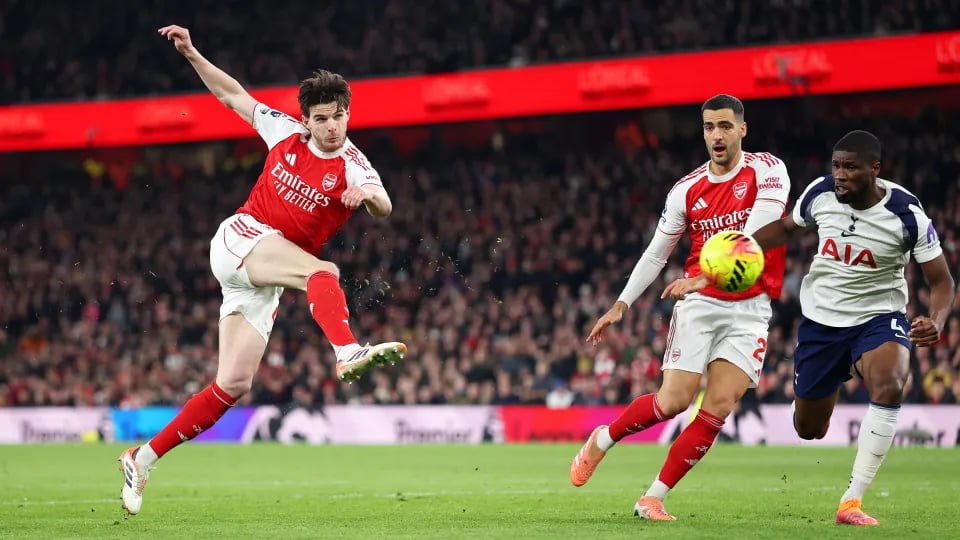The Crucial Value of Defending: Why Modern Football Underrates the Clean Sheet
A former manager argues that the Premier League’s obsession with possession football has led to a costly devaluation of traditional defending.
SPORTS
Muhammad Umaish
11/23/20253 min read


The Defensive Renaissance: Why Arsenal vs. Spurs Could Be a Battle of Structure
The upcoming North London Derby between Arsenal and Tottenham Hotspur promises a compelling clash, but it may defy recent history. For the past five seasons, this fixture has been synonymous with high-scoring encounters, averaging more than three goals per game. However, an analysis of modern football trends suggests that Sunday’s match might be a far tighter, more structured affair, primarily due to a strategic shift by both clubs toward valuing defensive solidity—a trait the author argues is often overlooked in the contemporary game.
The current emphasis in the Premier League is overwhelmingly on a possession-centric style, leading many, including the author, to believe that proper defensive fundamentals have been compromised. In the pursuit of playing football "the correct way," both individual and collective defensive skills have taken a back seat to passing and ball retention.
This is why the strategic adjustments made by Mikel Arteta at Arsenal are so significant. While the team maintains its spectacular attacking play, Arteta has based their sustained success on a strong defensive foundation, recognizing that elite teams must be built from the back. This season, Tottenham, under the guidance of Thomas Frank (who replaced Ange Postecoglou), has adopted a similar philosophy: finding a crucial equilibrium between scoring goals and preventing them. Both coaches understand that a team's overall structure, whether in possession or out of it, dictates long-term success.
The Undeniable Statistical Value of a Shutout
The importance of a robust defense is not merely anecdotal; it is clearly borne out by statistics that seem to be ignored by many proponents of possession football. Before this weekend, every team in the Premier League’s top six had conceded an average of one goal per game or less.
The author, drawing on decades of experience in management, operated on the principle that securing a shutout was approximately twice as valuable as scoring a single goal. Data from the author’s time managing Stoke City between 2008 and 2011 proves this point vividly. During those three difficult seasons when the club was establishing itself in the top flight, Stoke recorded 35 shutouts, which yielded a total of 83 points—an average of 2.37 points per game. In contrast, scoring a single goal in a match during that same period typically yielded an average of 1.1 points. Statistically, for that Stoke side, a clean sheet was worth roughly the same as netting three goals in a match.
Crucially, this reality remains true today, with the value of a shutout actually increasing as goal totals in the Premier League rise and the overall number of shutouts drops. Back in 2008, a shutout resulted in a victory roughly 70% of the time; today, that figure has climbed to an emphatic 83%. Despite this irrefutable data, the prevailing focus remains fixated on stylistic possession play, a factor the author links directly to the higher goal count seen in the modern era compared to 10 or 15 years ago.
The Pitfalls of Possession Obsession
The shift toward possession football has exerted a massive influence on the English game, indoctrinating younger coaches and players into believing it is the only proper way to play. The author maintains that this approach carries numerous risks, especially when it involves the prevailing trend of teams attempting to pass their way out from the back.
This focus on circulating the ball among defenders has, in some respects, led to a defensive regression, as priority is placed solely on ball skills. Historically, the best ball-playing defenders—such as Mark Lawrenson and Alan Hansen from the legendary 1980s Liverpool team—were exceptional not just with the ball at their feet, but also in their fundamental defensive attributes. Unless a team possesses truly world-class, dual-threat defenders, playing deep in their own half invites pressure and danger, a fact clearly reflected in the data.
The author’s managerial priorities were always different. While he valued having competent ball-playing midfielders and wingers—such as Matthew Etherington, Chris Brunt, and Yannick Bolasie—he preferred to move the ball quickly through the field, whether via short or long passes, to get it to his playmakers early. This approach, favoring direct forward movement over keeping the ball deep, was designed to encourage quick final-third entries and maximize action in both penalty boxes.
Frank’s Pragmatic Shift at Tottenham
This philosophy of prioritizing directness and defensive structure is precisely what Thomas Frank appears to be implementing at Tottenham. It is a sharp departure from the style employed by Ange Postecoglou last season, which was often viewed as reckless due to its lack of balance between attacking and defending.
Under Frank, Tottenham is now spending less time in their own half, which has directly resulted in fewer chances and goals being conceded. The statistical evidence strongly supports the notion that this added pragmatic approach is the key factor that has propelled them into a highly encouraging league position.
All truly successful teams must be built on a reliable defensive platform to ensure the consistent collection of shutouts. Frank's ultimate challenge will be to achieve the exact blend of defensive steel and attacking fluidity that Arteta has successfully cultivated with Tottenham’s fiercest rivals. Given the commitment to structure Frank has shown so far, the author is convinced he will eventually achieve that coveted balance.
